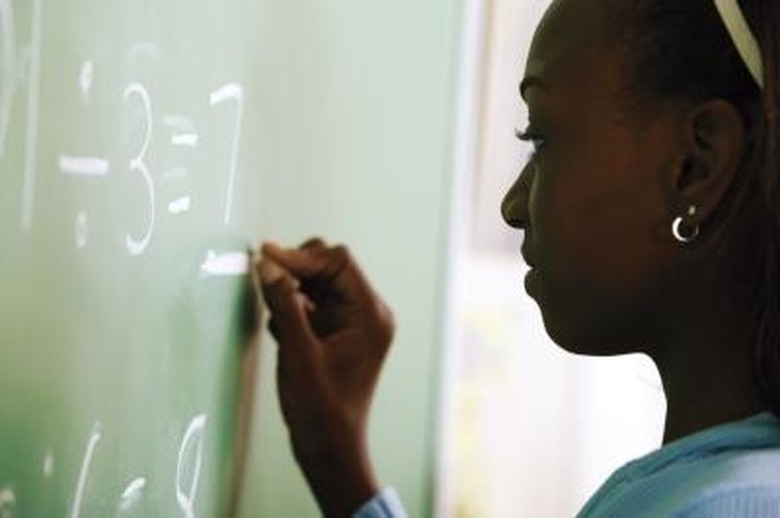A number can have two inverses. One inverse is the additive inverse, which is the value that when added with the original number will equal zero. To find the additive inverse, just make the original value negative if it’s positive or positive if it’s negative. Another inverse of a number is the multiplicative inverse, or reciprocal. When a reciprocal is multiplied by the original number, the product is always 1.
Step 1
Write the number as the denominator of a fraction that has 1 as a numerator to find the reciprocal of an integer. For example, the reciprocal of 5 is 1/5.
Step 2
Place a decimal number as the denominator of a fraction with 1 as the numerator, then divide to calculate the reciprocal of a decimal. For example, the reciprocal of 0.5 is 1/0.5. Dividing 1 by 0.5 is the same as dividing 10 by 5, so 1/0.5 also equals 2.
Step 3
Reverse the placement of the numerator and denominator for the reciprocal of a fraction. For example, if the fraction is 3/4, reversing the positions results in 4/3.
Step 4
Multiply the exponent of a number by -1 to express the exponent as a reciprocal. For example, 4^3 becomes 4^-3 when the exponent is multiplied by -1. The expression 4^-3 in turn can be rewritten as 1/(4^3) and solved as 1/64.

